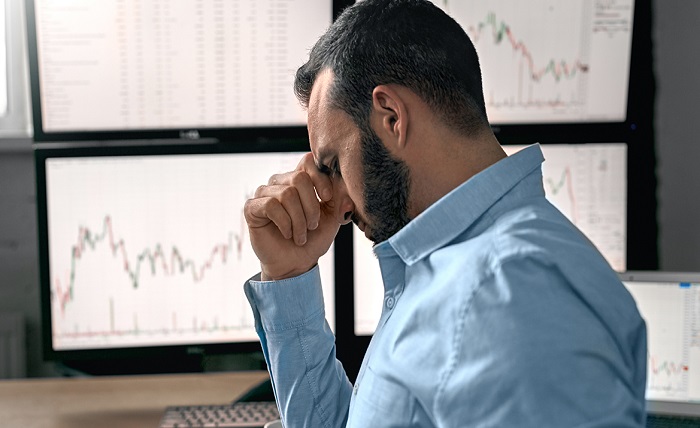Top 3 mistakes of novice traders

Mistakes in trading are common, even among experienced traders. Spotting and learning from these mistakes is crucial for improving your skills as a trader.
Some mistakes can be very costly and lead to destroying trading careers in their infancy. Thankfully, the internet is full of great educational material such as this guide for FX trading beginners, and many others.
In this article, we’ll discuss the most common mistakes beginner traders make. Understanding these mistakes will help you avoid them and improve your trading results.
Trading without proper risk management
The most common mistake beginner traders make is to trade without proper risk management. Risk management is a crucial part of successful trading, especially for beginners. It involves the use of strategies and practices that aim to protect trading capital. Trading success is never dependent on a single trade, traders need to have an edge and spread their risks on multiple trades for profitability and consistency. Here are some key risk management principles to follow:
- Define your risk tolerance level: The first step is to define how much you are willing to risk per trade, per day and per month. This way you can protect yourself from emotional trading. Emotional traders often place oversized orders after losing trades to cover for the losses. This strategy may work a couple of times, but ultimately it ends with an empty trading account. Professional traders set limits to themselves. For example, often traders have a daily loss limit or monthly loss limit. After hitting the daily limit, they stop trading that day to prevent feelings such as desire to revenge trade from making impact on their decisions.
- Always use stop loss orders: implementing stop loss orders is essential for limiting potential losses. Stop loss orders serve double purpose: They limit your losses and help you calculate risk reward ratios. It should be noted that in many cases profit targets are not always obvious, especially when traders trade trends. However, a stop loss target should always be visible to traders. If the risks are too high, trade might not be worth opening.
- Set realistic profit targets: in addition to setting stop loss orders, it’s important to set realistic Take Profit (TP) targets. Some traders use trailing stops, or close trades partially when price reaches predetermined levels. It takes practice to find out what works for you best.
- If you are an active trader, it’s best to stick to a couple of markets to be less distracted by the huge amount of market information. However, for investors the opposite is true. Investors diversify their risks by investing in different assets. Diversification can provide a buffer against significant losses in any single asset market.
- Position sizing: determine the appropriate position size for each trade. This way your trading balance will be protected if price moves against you. For example, many experienced traders never risk more than 1-5% of their trading capital per trade.
- Never let your emotions sit on the driver’s seat: human emotions such as greed, fear, hope and desire to revenge trade can cloud judgment and lead to impulsive decision-making. Traders need to stick to their trading plan and stop trading when they feel overwhelmed by these emotions.
- Use proper risk to reward ratio: before opening a trading order, traders first need to calculate risk to reward ratio. Some trades may never be worth the risk, while others might offer great rewards. In general, traders use 1 to 1 risk/reward ratio or better. It’s never a good idea to risk more than there’s potential for profit.
- Keep upgrading your strategy and skills: trading conditions keep changing and traders need to keep changing as well to be profitable. The modern technology made it possible to replace floor traders, many floor traders have managed to upgrade their skills, while others had to stop trading altogether. The financial markets are still evolving as more and more trading algorithms are participating in trading.
- Keep using demo accounts: demo accounts help not only beginners to learn how to trade, but also professionals. Seasoned traders use demo accounts to backtest and test trading strategies risk free. Demo accounts come handy when it comes to developing and upgrading trading strategies. In addition, when a trader knows that his strategy is profitable, his confidence is high and there’s less chance of emotional trading.
Trading without preparation
Majority of traders start their trading journey because they think it’s an easy way to make fortune, while the opposite is true. Profitable trading requires hard work. Preparing for trading financial markets requires a combination of knowledge, skills, funds, and practical steps. These steps include:
- Prepare financially: retail trading requires upfront investment. On the upside, you can trade risk free on demo accounts or start investing using small amounts of money. Most Forex brokers have very low minimum initial investment requirements. However, as you learn more about trading and get ready for trading professionally, you will realize that 100 USD is not enough to trade with proper risk management in place. As already mentioned, seasoned traders risk up to 1-5% of their trading capital per trade. It’s very difficult to spend your whole day aiming to make a dollar or two from a trading session. The lack of sufficient trading balance is the reason why most beginners place oversized positions and blow up their accounts. In addition, traders need to purchase office equipment such as desks, office chairs and computers. Many quality seminars and webinars also can be costly.
- Educate yourself first: proper education is key to success in trading. Some traders learn from others, and some learn from their own mistakes. While others never learn and keep losing money. It’s recommended to have a trading journal that includes information about your each trade. The trading journal should include your emotional state while making a trade, reasons for opening the order, reasons for closing and results. The internet is full of high and low quality educational material. In addition, there are many scammers. It’s best to read, watch, and listen to as much educational material on trading as possible. This way, soon you will be able to tell quality education from low quality one.
- Develop a trading plan: Trading plan includes rules for entering and exiting trades, risk management guidelines, position sizing and timeframes. A proper trading plan provides a framework for consistent decision-making and helps traders remain disciplined.
- Choose a reliable broker. There are many great brokers to choose from, such as Axiory. When choosing a broker, consider factors such as fees, trading platforms, customer support, trading instruments offered, and regulatory compliance. It’s critical for your broker to be regulated by reputable financial bodies.
- Learn technical and fundamental analysis. Fundamental analysis involves analyzing economic, financial and political data, while technical analysis studies charts and patterns using indicators and trendlines. There are many successful traders that place orders based on purely fundamentals and vice versa. However, as a beginner, it’s important that you learn how to conduct both technical and fundamental analysis, try both and find out what works best for you. In addition, it should be noted that many traders use both methods simultaneously to predict future market movements.
Trading using money they cannot afford to lose
Many traders rush to fund their accounts and start making money. Often traders take out loans from banks or from their friends and relatives promising to return the money back in a couple of months. Which is a huge mistake for a couple of reasons:
- Trading financial instruments carries a high risk of losing initial investment entirely, especially for a novice trader. Leverage helps traders to increase their purchasing power. And use of high leverage can increase profits as well as losses. In addition, beginner traders are competing against professional retail and institutional traders and they have a lot to learn to avoid mistakes.
- Trading using borrowed funds puts traders under unnecessary stress. When a trader has to make money, he takes unnecessary risks, and overtrades. Profitable trading requires only trading when the best trading opportunities present themselves, and not when traders need to make money.
Overall, trading using borrowed money is a bad idea. In addition, if the money is yours and you are investing in the financial market without having a yearly budget for your expenses, you will also be in a tough spot. If you need money from trading to pay your monthly bills such as rent, utility payments and other payments, you will most likely overtrade. Trading is not like having a job with a steady paycheck. No matter how good a strategy is, every strategy experiences periods of drawdowns. And when traders are forced to trade during drawdowns, they tend to lose more money. In addition, many people lose money due to feeling bored. It’s best to have a second stream of income or a hobby to steal your attention while there are no good trading opportunities in the market.
Key takeaways
To sum everything up, mistakes are a part of trading. Especially beginner traders make lots of mistakes. Some of the most common mistakes beginners make include:
- Failure to manage risks and emotions
- No preparing for live trading accordingly
- Trading using money they cannot afford to lose
Avoiding these mistakes can improve your trading results and make you a better trader. You can use a trading journal to monitor your progress in the process and improve using your own mistakes.




